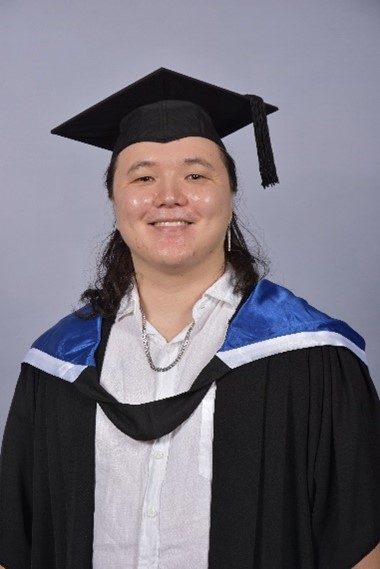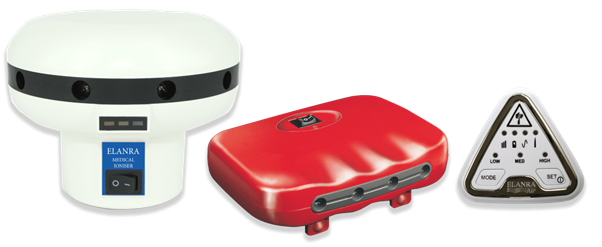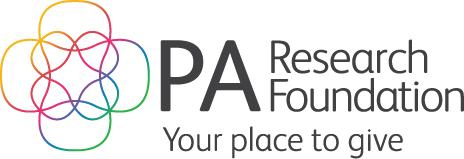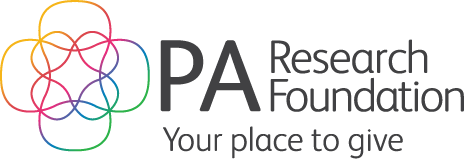
Thanks to funds raised through PA Research Foundation’s annual Give Big event, PhD student Christopher Davies will be able to advance his PhD research project on plasma-based cancer research under the supervision of Professor Erik Thompson.
“I'm doing my PhD at the moment; it's investigating this new kind of technology for cancer research. It generates a plasma, not the blood plasma as everyone knows. You slightly feed it a gas, and it achieves this new state of matter,” he said.
“This project that I received funding for is investigating a different machine, the ELANRA, that was already in circulation commercially, it's a negative ion generator.
We don't actually know how it works specifically, but it's theorised that it produces something similar to this new piece of plasma technology.
“What I'm aiming to do is go through and verify what it’s actually generating; does the ELANRA have any potential for therapeutic effects such as in cancer, if so, to what degree?
That way we're able to open up our avenues to say, is there more than one machine, how effective is it, how’s it compared to this new and novel plasma technology? And it allows us to widen that scope.
“The plasma technology I'm looking into is so new there has only ever been two
clinical trials and they haven't been super in-depth. One was in Germany, and one was in the US. What this funding is allowing me to do is explore beyond just the plasma machine that we use and look into a different alternative, like the ELANRA, that is actually very accessible to the everyday person. This negative ion generator, it's not a cheap purchase. It's pretty substantial, but it is something that the everyday budget can work towards.
“Some of the plasma technology clinical trials in Germany were about palliative care patients with throat and head cancer, and some of the cancer ulcerated and actually perforated the skin, growing from the outside.
The technology from the plasma generator managed to reduce the size to a point in about two months and five out of the six patients reported that they found it was very beneficial for easing their symptoms and enhancing that palliative experience.
“Additionally, standard treatments are radiation based. So, whatever we can do to reduce radiation, move away from radiation techniques, will be beneficial because you want to avoid all those nasty side effects.
You could get hit with a tiny fraction of radiation and you might get something and someone else doesn’t, but it's unfortunately just the way it is.
“In terms of how important it is, I think just stems from the fact that this kind of technology could be truly life changing.
Everyone knows someone who's suffered through cancer, whether it's themselves having cancer or a family member or someone close to them.
It's not just the individual who suffers, cancer effects everyone around the support network. It’s just devastating.
“Funding is so crucial because plasma cancer treatment has such a wide effect on everybody. Being able to even move that needle forward ever so slightly against something as ambiguous and difficult as cancer is a huge step.
“There's a lot of potential here and it's very exciting, especially because the company that made the machine didn't really have a physics foundation. I'm a physicist myself so this kind of research is very important.
Redefining that foundation so that you can say in confidence this machine is doing what it says it does. I think that's a great ease of mind for a lot of people but also allows for further exploration of what it can actually do.
“I would say there's a very large scope for what plasma technology can do. We’ve just thought about the foundational level now of doing the cancer cell testing and characterising of what this machine actually is.
Give it like another 10 years, you know, it could be huge leaps going forward.
“If it does prove a positive benefit, especially in the long term, I would say that's an extreme win for public health because I'm sure everyone can get on board with reducing cancer like that.”
Christopher said he was full of gratitude to the Foundation for getting behind his work.
“It's always crucial to secure research funding. It’s incredibly hard, and it has to be, because you have to be thorough. You have to demonstrate you're actually doing something worthwhile, and the results are able to speak for themselves.
“Massive shout out to the Foundation and their Giving Day, just having money available is such a mental relief. I can actually sit down, focus on the research and not have money stress on the back of my mind.
"And of course, we have the funding going towards the equipment, chemicals, shipping off tests of what we do to different labs etc. Every step of the way this funding can facilitate the actual ELANRA experiment so we're able to see it through from start to finish.
We have a good estimate of being able to finish this project and we'll be able to get some sort of outcome that will tell us: is this ELANRA machine beneficial for patients.”





